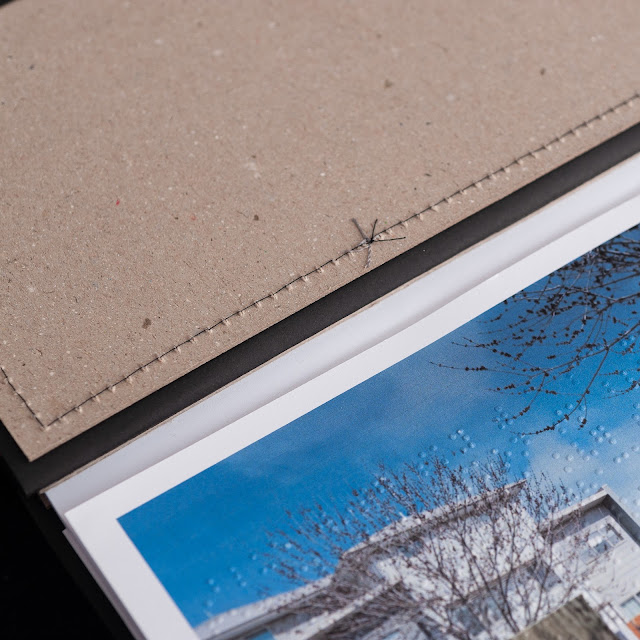Photobooks | Brian Rope
Concept
to Publication| Beata Tworek, Caroline Lemerle, Claire Manning, Con Boekel,
Grant Winkler, Ian Houghton, Jamie Hladky, Louise Grayson, Rob Lee, Sara Edson,
Yvette Morris
Photo Access | 13 - 22 October 2022
PhotoAccess recently launched numerous independently published photo-books, all made during its inaugural workshop program Concept to Publication. Guided by Canberra-based documentary photographer Dave Hempenstall, eleven photographers came together to explore the potential of the photographic book.
Over ten months, they investigated different forms, discussed significant historical and contemporary works, experimented with making and the materiality of the photo-book and refined their authors’ voices to make the books that then were put on exhibition at Photo Access. Copies of some of the books were also available for purchase.
Spending time in the gallery looking at, and through, each book is a most pleasant way to spend time. The books are diverse in every way. There are, in fact, more books than authors. Rob Lee has a set of eight slim books about eight different places where books are to be found. They include a reading room, a museum, various libraries and, even, the Lifeline Bookfair’s warehouse. Perhaps, next, he might make books in people’s home bookshelves, in bedside table piles, or even in their hands being read whilst traveling on public transport?
Sara
Edson has two books on display, both very small. Transfer from Dalton is
tied in a tiny parcel. It is a delightful little concertina folded book that
one could play with for hours turning it about in many directions. Both contain
numerous pleasing colour photographs.

Transfer from Dalton. Book by Sara Edson. Image by Dave Hempenstall
Louise Grayson’s book shows images of Deception Island, Antarctica. The photos are a mix of monochrome and colour shots amongst quite a number of blank white pages. Where there are images on facing pages, I was unsure about some of the juxtapositions but that in no way diminished my enjoyment of the publication. I particularly enjoyed the images of birds in flight over the landscapes and, especially, one essentially black and white image with just a small splash of red – a worn jacket and hat.
Con Boekel also has blank pages amongst his fine images of wounded trees. This book is about the small urban nature island known as Dryandra Street Woodland, where many trees have been cut with axes or chainsaws. He sees the wounds on the trees as symbols of the damage inflicted by humans; and trees there that flourish as symbols of hope for the future. This is a great project, and the book is appropriately dedicated to Canberra’s nature conservation volunteers.
Caroline Lemerle has taken what might be described as a traditional approach but, regardless of whether that is the case or not, she tells her story That 50th extremely well showing, through splendid imagery the friendships, family, food, fanfare and feasting of what clearly was a great celebration.
Beata Tworek’s Everyday Magic includes some shots that might initially be seen as mundane. But all are, indeed, magical. Again there are some blank pages – this time some are white but others black. There are also a number of beautiful transparent pages of photographed flora – these add immensely to the finished product.
Yvette
Morris has also included blank pages in The Space Between, so I presume the
project identified that as an option participants might incorporate into their
books. This particular work explores transient space through black and white
images of dirt mounds – again mundane subject matter. Morris successfully draws
an analogy between the transitory space of unnoticed changes in the mounds and everyday
subtle changes in people.

The Space Between. Book by Yvette Morris. Image by Dave Hempenstall
In Wrong Way, Go Back, Grant Winkler acknowledges his wife’s encouragement to persist and also the value of the interactions with other participants and Hempenstall. Whilst the photographs in the book might at first seem random selections, spending time with them effectively enables the viewer to get his message.
Jamie Hladky’s When we drove out of town to escape the bushfire smoke is a spiral bound collection of moody black and white, smoky images. Another excellent book in this collection.
Moments
We See
is Claire Manning’s contribution. It is a delightful hand-bound book of fold
out pages, each of which open to reveal words about pairs of photos revealing
how she sees and interacts with her world. It is a most successful and clever
creation that could be enjoyed repeatedly.
 |
Moments We See. Book by Claire Manning. Image by Dave Hempenstall. |
Last,
but not least, there is Ian Houghton’s Ginninderra Creek. This is a lay-flat
book of quality double-page spread images about the creek which is a green
corridor through urban areas of Gungahlin and Belconnen as well as across rural
land. Again, it tells a great story.

Ginninderra Creek. Book by Ian Houghton. Image by Dave Hempenstall
Photo
Access has suggested that the wonderfully diverse approaches and final forms
are a testament to the participants dedication to the process. I agree. The
program was deemed so successful that Photo Access has already announced
another such event for 2023.
This review is also available on the author's blog here.